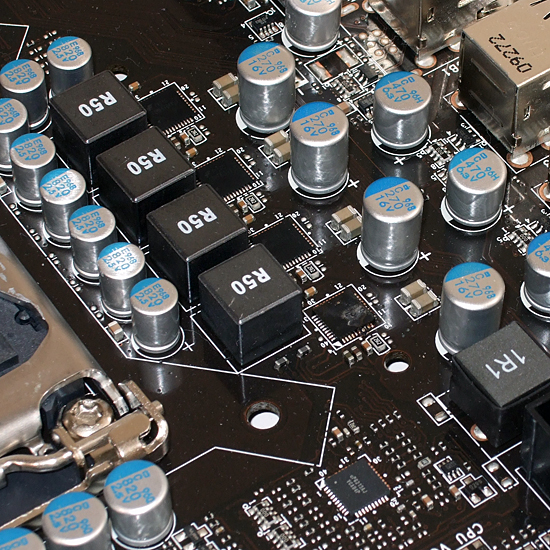Core i7-870 Overclocking And Fixing Blown P55-Based Boards
Shocking Revelations Of Inefficiency
Our motherboard roundups have shown that Intel’s LGA 1156 interface brought with it a greatly needed modicum of efficiency compared to the enthusiast-oriented LGA 1366 platform. But only part of that power savings comes directly from the Lynnfield-generation CPU core, with remaining reductions found by eliminating all remaining northbridge functionality from the chipset and reducing it to a single component. Furthermore, much of the power savings that the new CPU core provides comes from slight refinements that have allowed the new processors to operate at a slightly lower voltage, a characteristic that’s typically disregarded when overclocking.
Using the same 8MB L3 cache and 45nm die process, the 37% difference in thermal design power (TDP) between Bloomfield- and Lynnfield-based processors is only realistic when both are left at their respective stock settings. Forcing both processors to identical core voltage levels for the purpose of overclocking causes the newer part to take on much of the previous part's inefficiency, a fact revealed only through extensive testing.
Thus, when some manufacturers economized the voltage regulators of “overclocking-friendly” LGA 1156 motherboards by what their engineers thought should be an acceptable level, they were shocked to learn that these parts couldn’t stand up even to our moderate overclocking tests. The results are documented in our subsequent test of $100-$150 P55-based motherboards.
A 150W board limit certainly sounds generous enough, but our testing has proven that it’s very easy to exceed that limit even at the moderate voltage levels supported by CPU air cooling. We begin today’s investigation with a power analysis, using a board known for its solid overclocking capability, before moving on to examine how the manufacturers of two previously-failed motherboards have addressed their problems.
Get Tom's Hardware's best news and in-depth reviews, straight to your inbox.
Current page: Shocking Revelations Of Inefficiency
Next Page Step 1: Finding The Overclocking Limits-
cyberkuberiah but some of us would rather give some extra beans and go 920 , and have dual pcie2.0 x16 . a few extra watts doesn't matter too .Reply -
FYI: Power consumption of switching cmos silicon increases with the square of voltage, and linear with frequency. The increases shown here seem to be in line with that, rather than the stated decrease in voltage regulator efficiency (which certainly does decrease, but probably much less).Reply
-
Crashman dan__gFYI: Power consumption of switching cmos silicon increases with the square of voltage, and linear with frequency. The increases shown here seem to be in line with that, rather than the stated decrease in voltage regulator efficiency (which certainly does decrease, but probably much less).Reply
Can you turn that into a more accurate estimate than 200W to 240W, where all that can be proven is that it's "high, but less than 240W"? -
jeffunit Are your power consumption measurements of the cpu, dc power or wall socket power? If they are the latter, which I suspect they are, then you have to factor in the power supply efficiency, as 150w socket, means 150w DC.Reply
-
bucifer I would be great to see how the more popular i7 860 or at least i5 750 scale with the voltage.Reply
I don't think i7 870 is a popular choice because of it's price (people would go for socket 1336) -
ctbaars Thanks for article.Reply
For me - This and previous articles have convinced me to game at stock, w/ tb+ settings on, and a high end GPU card and the i5 is most appropriate for my usage. I need to condition myself to turn off the computer esp. when noone is home. -
avatar_raq Although Thomas labels Asrock as "succeeds" I will not buy their motherboards, you'll never know what else this company ignores in the bios, and do you think they would fix that issue if it weren't for THG? After how many failing boards?Reply -
tecmo34 cyberkuberiahbut some of us would rather give some extra beans and go 920 , and have dual pcie2.0 x16 . a few extra watts doesn't matter too .I agree with you 110%... :DReply
Also, I would like to see the voltage scaling using the i5 750, as mentioned by bucifer -
Onus A few extra watts being "used" is fine. A few extra watts being "wasted" is something else entirely.Reply
I don't see a howling difference on these overclocks either. If I bought an i7, that probably means I'd have little reason to OC it.
While ASRock seems to be taking a "successive approximations" approach to improving their products, the ones I've bought so far have all been solid, but any OC has been mild.
And, once again (even if it isn't quite epic), MSI = FAIL.
-
jerreece I was glad to see this article. I was just thinking about this whole debacle this morning. :)Reply

